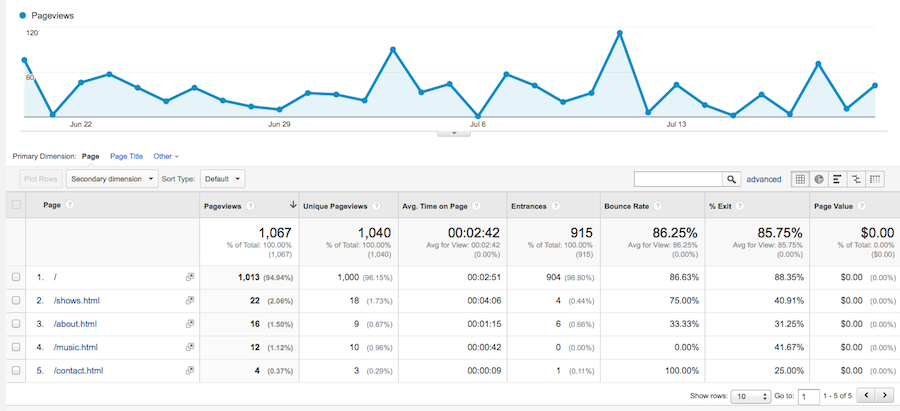1. Average Time On Page
This metric shows you the average amount of time visitors spend on each of your pages. More time on a page often means more interest and engagement. If you're an eCommerce site, your visitors may by considering your products. If you have a blog, they they’re probably taking the time to read your articles. Either way, longer visits tend to produce more value.
Make this metric work for you: Study the posts and pages that have above average times and compare them to the rest of your site. Is there a big difference between the types of content that keeps your audience engaged? This can give you clues for content topics and designs that make your audience happy.
Use Page Layouts to refine the look and feel of underperforming pages. Take note of improvements as you add and remove elements until you’ve struck the right balance and see this metric grow on underperforming pages.
2. Bounce Rate
Bounce Rate represents visitors who leave your site after the first interaction. If you visit a new website, and immediately leave without clicking on any internal links or pages, that would be considered a “bounce.” Generally, a lower bounce rate means more meaningful traffic and a better connection with visitors.
Make this metric work for you: Look at the pages with the highest bounce rates. There’s something missing on these pages. Consider adding relevant links to other content on your site so visitors are more likely to stay. You could also try adding interactive features like contact forms or image galleries to give your audience options for further engagement.
3. Exit Percentage
The exit percentage is similar to bounce rate, tracking how often users leave your site from a specific page. The key difference is that exit percentage occurs after at least one interaction, where bounce rate involves a visitor who has not engaged at all. This is an important distinction because these visitors have interacted, you’ve created something that entices them, making them an even better match for audience building.
Make this metric work for you: You can use this metric to craft true audience-centric content. Study the pages with below average exit scores. Are they providing value and addressing visitor interests? If you have a store, add product recommendations to keep visitors on your site even if they don’t necessarily want to buy the product on that specific page. Try to mix in anchor links to help your audience easily navigate pages with lots of content. Give readers a reason to stick around, and they will.
What metrics do you find most useful for optimizing your website? Share your thoughts with us in the comments.

 RSS Feed
RSS Feed